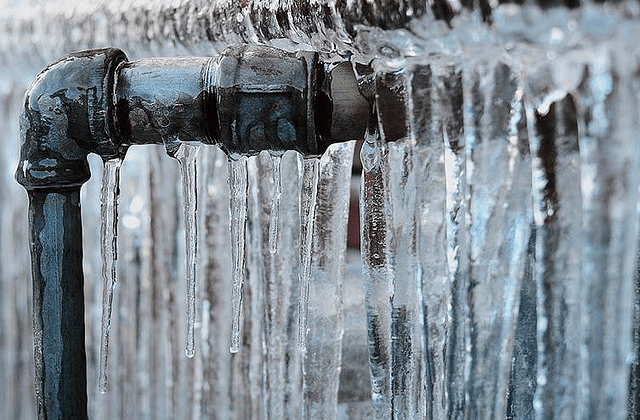Protecting Against Frozen Pipes in Winter: Expert Advice
Protecting Against Frozen Pipes in Winter: Expert Advice
Blog Article
We've stumbled on this great article on 6 Ways to Prevent Frozen Pipes down the page on the web and accepted it made good sense to quickly share it with you on this site.

Cold weather can damage your pipes, particularly by freezing pipes. Here's just how to prevent it from taking place and what to do if it does.
Intro
As temperature levels decrease, the danger of frozen pipes boosts, possibly leading to pricey repair work and water damages. Comprehending exactly how to stop icy pipes is vital for homeowners in chilly climates.
Understanding Icy Pipelines
What creates pipelines to freeze?
Pipelines ice up when exposed to temperatures below 32 ° F (0 ° C) for extended durations. As water inside the pipelines ices up, it increases, taxing the pipe wall surfaces and potentially creating them to rupture.
Risks and problems
Icy pipelines can cause water supply disruptions, residential or commercial property damage, and expensive repair services. Ruptured pipelines can flood homes and trigger substantial architectural damage.
Indications of Frozen Piping
Recognizing frozen pipes early can prevent them from bursting.
Exactly how to identify icy pipelines
Search for decreased water circulation from faucets, uncommon odors or noises from pipelines, and noticeable frost on revealed pipelines.
Prevention Tips
Shielding prone pipelines
Cover pipelines in insulation sleeves or make use of warm tape to safeguard them from freezing temperature levels. Concentrate on pipes in unheated or outside locations of the home.
Heating methods
Maintain indoor areas appropriately warmed, particularly locations with plumbing. Open closet doors to permit warm air to circulate around pipes under sinks.
Safeguarding Outdoor Plumbing
Garden hoses and exterior faucets
Disconnect and drain yard hoses prior to winter months. Mount frost-proof spigots or cover outdoor taps with insulated caps.
What to Do If Your Pipelines Freeze
Immediate activities to take
If you suspect frozen pipelines, maintain faucets available to ease pressure as the ice melts. Utilize a hairdryer or towels taken in warm water to thaw pipes slowly.
Long-Term Solutions
Architectural modifications
Consider rerouting pipes away from outside wall surfaces or unheated areas. Include added insulation to attic rooms, basements, and crawl spaces.
Updating insulation
Buy high-grade insulation for pipes, attic rooms, and walls. Proper insulation helps maintain constant temperature levels and decreases the threat of icy pipelines.
Final thought
Stopping icy pipes requires aggressive measures and fast responses. By understanding the causes, signs, and preventive measures, homeowners can shield their pipes during cold weather.
6 Proven Ways to Prevent Frozen Pipes and Protect Your Home
Disconnect and Drain Garden Hoses
Before winter arrives, start by disconnecting your garden hoses and draining any remaining water. Close the shut-off valves that supply outdoor hose bibs and leave the outdoor faucet open to allow any residual water to drain. For extra protection, consider using faucet covers throughout the colder months. It’s also important to drain water from any sprinkler supply lines following the manufacturer’s directions.
Insulate Exposed Pipes
Insulating your pipes is an effective way to prevent freezing. Pipe insulation is readily available at home improvement stores and is relatively inexpensive. Pay close attention to pipes in unheated areas such as the attic, basement, crawl spaces, or garage. Apply foam insulation generously to create a buffer against the cold. You can also wrap your pipes in heat tape or thermostat-controlled heat cables for added warmth.
Seal Air Leaks
Inspect your home for any cracks or openings that could let in cold air. Seal any holes around the piping in interior or exterior walls, as well as the sill plates where your home rests on its foundation. Additionally, make sure to keep your garage door closed unless you’re entering or exiting. Leaving it open creates a significant air leak that can lead to frozen pipes.
Allow Warm Air Circulation
During cold snaps, it’s essential to allow warm air to circulate evenly throughout your home. Leave interior doors ajar to promote better airflow. Open kitchen and bathroom cabinets to help distribute heat consistently around the rooms. If you have small children or pets, be sure to remove any household chemicals or potentially harmful cleaners from open cabinets for safety.
Let Faucets Drip
A small trickle of water can make a big difference in preventing ice formation inside your pipes. When temperatures drop significantly, start a drip of water from all faucets served by exposed pipes. This continuous flow helps prevent the water from freezing. Additionally, running a few faucets slightly can relieve pressure inside the pipes, reducing the chances of a rupture if the water inside does freeze.
https://choateshvac.com/6-proven-ways-to-prevent-frozen-pipes-and-protect-your-home/

I am just very involved in Prevent Frozen Pipes and I am hoping you enjoyed my entry. Feel free to take the time to distribute this blog entry if you liked it. Thanks for your time. Come back soon.
Call Today Report this page